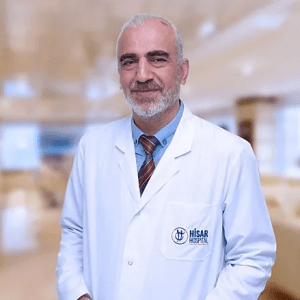Angiography
A coronary angiogram is a procedure that uses X-ray imaging to see your heart’s blood vessels. The test is generally done to see if there’s a restriction in blood flow going to the heart. Coronary angiograms are … Read More
Top Doctors For Angiography Treatments
Top Hospitals For Angiography Treatments
Angiography
Angiography is one of the methods of modern diagnostics. It is a contrast x-ray examination of blood vessels. Angiography is used in fluoroscopy, radiography, computed tomography, hybrid operating theaters (operating theater for medical imaging). This medical imaging technique determines the functionality of blood vessels and the collateral blood flow state.
It also allows evaluating the integrity and structure of the vascular network, normal and accessory arteries.
Angiography of the vessels of the head, limbs, heart, and other organs and parts of the body is the most reliable and accurate of all the existing methods for diagnosing vascular disease. It is a high-tech procedure that is carried out using modern X-ray equipment. Experienced doctors perform angiography. Reference for the examination is issued by cardiologists, vascular surgeons, neurologists, oncologists, and other narrow specialists.
Why is it done? Indication for Angiography
The main tasks of angiography are to identify the disease of the circulatory system and its nature. With angiography, it is possible to achieve ideal visualization of large veins of the extremities, arteries, aortas, and pulmonary arteries.
With the help of angiography, doctors have the opportunity to identify diseases such as:
- sclerosis of the vessels of the brain
- congenital malformations of veins and arteries
- hypertension of various etiologies
There are many indications for angiography. Among the most common are:
- deep vein thrombosis with the identification of the nature of the changes
- thromboembolism (that is, blood clots in the pulmonary duct)
- defects of arteries and veins
- lesions of the renal arteries
- lesions and diseases of the aorta
- aneurysms
How & which part of the body is being examined?
- Extremity angiography aims at the examination of the arteries and veins of the upper and lower extremities.
- When examining the upper extremities, 10-15 ml of contrast agent is injected into the brachial artery.
- When examining the lower extremities vessels, the catheter is inserted into the femoral artery or abdominal aorta. If it is necessary to contrast the vessels of the leg and foot, a puncture is made into the posterior tibial artery.
- After the contrast has filled the vessels, a serial survey is carried out using two perpendicular X-ray tubes. They turn on at the same time at regular intervals.
- Thanks to local anesthesia, no pain occurs when the catheter is inserted. At the moment of contrast introduction, a feeling of heat and a metallic taste in the mouth appears.
- Brain or cerebral angiography examines the vessels of the head to identify brain disease. For an accurate diagnosis, the contrast agent can be injected twice.
- Catheterization of the brachial, ulnar, subclavian, or right femoral artery is performed. The catheter is inserted into the branch of the desired vessel in the brain and a contrast agent is injected into its lumen.
- After the introduction of the first portion of the contrast, the head is taken in different projections (front and side). The pictures are evaluated immediately. To study the parts of the vessel distant from the center, a new portion of contrast is introduced, and the survey is repeated. After the substance passes through the tissues, it appears in the veins. During this period, another series of photographs are taken. At this stage, the catheter or puncture needle is removed, and the study is considered complete.
- During catheterization, the patient is given local anesthesia to numb the catheter insertion site. When the catheter moves through the vessels, there will be no pain since their inner wall is devoid of pain receptors. With the introduction of a contrast agent, a metallic taste in the mouth, a feeling of warmth, and redness of the face may appear. These phenomena disappear on their own in a few minutes.
- Angiography of the coronary vessels:- To study coronary vessels of the heart, a contrast agent is supplied through a catheter into the inguinal or femoral artery. In this case, the catheter must be advanced to the aorta. Then the right and left coronary arteries are filled alternately with contrast agents.
- A catheter must be inserted into the femoral artery in the groin fold or the radial artery on the wrist. Under X-ray television control, the catheter is advanced to the aorta, from which the coronary arteries branch off. When the tube reaches the desired vessels, a portion of the radiopaque contrast agent is fed through the channel. It is injected alternately into the left and right coronary arteries.
- The contrast agent fills the lumen of the heart vessels in a few seconds. During this period, a series of images are taken from different projections.
- When the contrast agent fills the vessels, there is a temporary sensation of heat, especially in the face. If the catheter touches the heart wall, heart rhythm abnormalities occur. Due to a decrease in blood pressure, the patient may feel dizzy. Occasionally, coughing and nausea appear.
Angiography Preparation
Consultation
At first, the patient should inform the doctor about all chronic diseases and medications taken. It may be that some of the drugs will have to be canceled before the diagnosis since they can affect the state of the vessels or the course of the intervention itself. Be sure to indicate the facts of allergic reactions to painkillers, iodine preparations (used as a contrast), and tranquilizers. If the patient is pregnant, she should notify the doctor about this since X-rays are dangerous for the fetus, and the study will be contraindicated.
Survey
Before angiography, it is necessary to pass several tests and undergo a comprehensive examination of the body. Usually, patients are prescribed:
- Fluorography
- ECG
- General and biochemical blood tests
- Donating blood for hepatitis, HIV, and syphilis
- Study of blood clotting (coagulogram)
- Research to determine the group and Rh factor of blood
An ultrasound of the heart is performed before coronary angiography. Additional examinations may be prescribed before other types of angiography.
Preliminary preparation
- Alcoholic drinks should be excluded two weeks before the examination.
- A week before the diagnosis, you need to avoid any blood thinners.
- A test for the tolerance of the contrast medium is carried out in 1-2 days. Angiography is not performed if any allergic reactions to contrast are detected: heart disorders, rhinitis, conjunctivitis, urticaria, etc. A test carried out in advance is safe for the patient. It is because only 0.1 ml of solution is injected intravenously. It is quickly eliminated from the body. The test is carried out under the supervision of a physician, which prevents serious body reactions that pose a danger to the patient’s health and life.
Preparation on the eve of the examination
On the eve of the examination, in the evening, you should:
- Cleanse the intestines. For the procedure, use glycerin suppositories or an enema
- To take a shower
- Remove hair from the puncture site (your doctor will tell you)
- Take tranquilizers as recommended by your doctor. With modern drugs, you will calm down and sleep well.
- Take antihistamines. They will allow you to prevent an allergic reaction to a contrast agent and other means used.
Preparation on the day of angiography
On the morning of the examination, you should:
- Avoid eating. With the introduction of contrast, vomiting is possible
- Avoid drinking any liquids (including water). It can also provoke gagging.
It is recommended to empty the bladder immediately before the procedure.
Recovery after the procedure
How quickly the patient recovers from the angiography depends on how large the study was. Several recommendations will help the patient recover sooner:
- follow bed rest and diet for several days after the procedure;
- eliminate stress and anxiety;
- exclude physical activity;
- take antihistamines to minimize the likelihood of an allergic reaction.
As a rule, if the examination was carried out correctly, the patient’s recovery takes approximately 2-3 days.
Angiography complications
Angiography is appreciated for providing a lot of information about the state of the vessels. Moreover, this diagnostic procedure is, in fact, a small operation with anesthesia and, like any operation, can have complications. As practice shows, after angiography, the following is possible:
- Acute infections and inflammations:- In the presence of such pathologies during the study, dangerous microorganisms can penetrate the blood. They will provoke an increased risk of vascular inflammation. In some cases, suppuration is possible at the site of introduction into the vessel of the catheter.
- Mental illness:- During the examination, the patient should strictly follow all the instructions and regularly report the condition and changes. With pathologies of the psyche, this is often impossible to do. Also, a stressful situation (the procedure itself) contributes to a deterioration in general well-being.
- Renal failure:- With such a pathology, a contrast agent is dangerous, which irritates the kidneys and prevents the normal outflow of urine, causing retention of the drug in the body.
- Blood clotting disorders:- Both reduced and increased blood clotting are pathologies that can cause a condition that threatens the patient’s life. In the blood of increased clotting, for example, a blood clot can form. Decreased clotting often causes severe bleeding.
- Pregnancy:- X-rays used to monitor the procedure can cause fetal abnormalities.
- Heart failure:- Often, during the examination, pressure rises or falls. Changes in heart rate are also possible. These conditions can be threatening for patients with heart failure.



























































































































